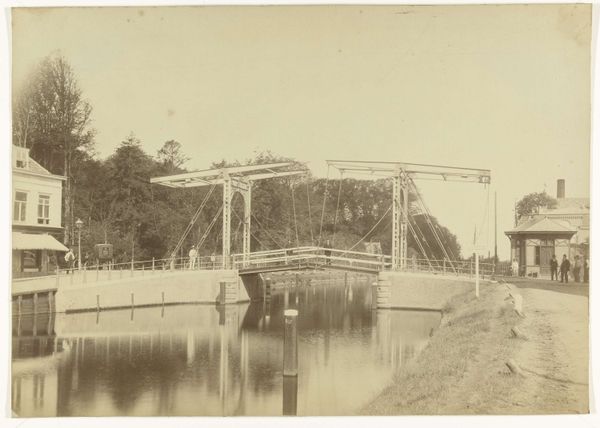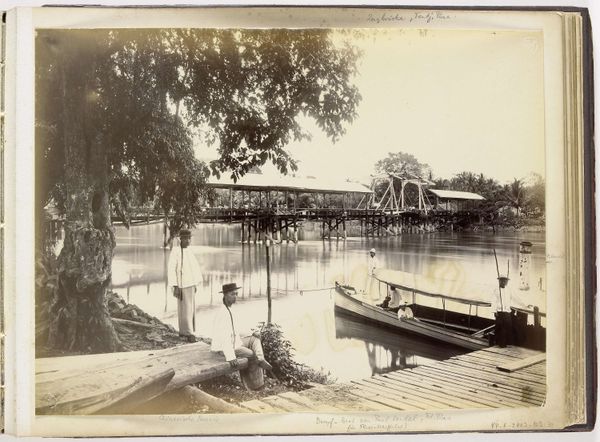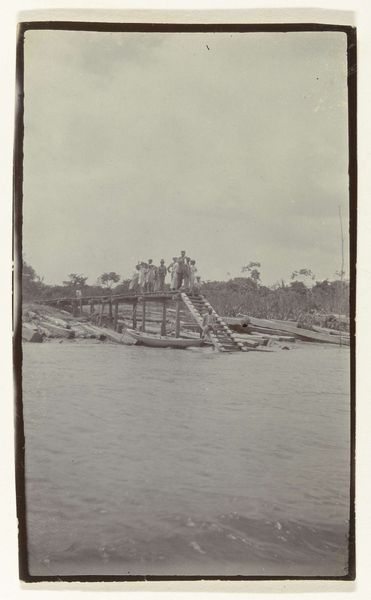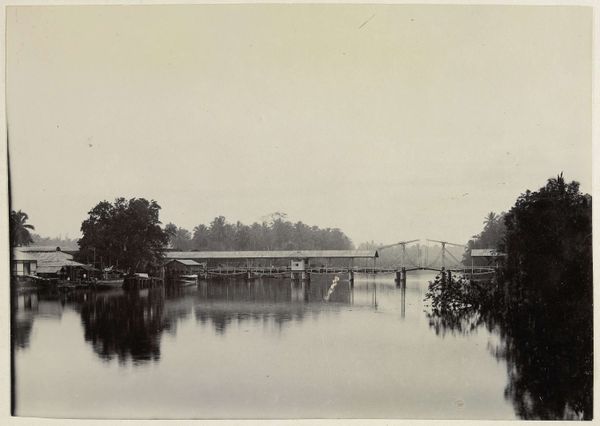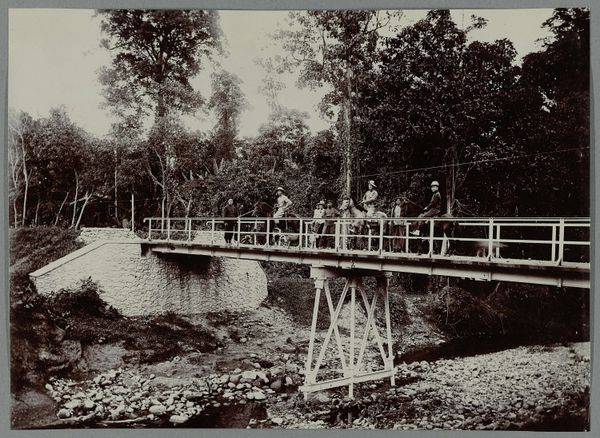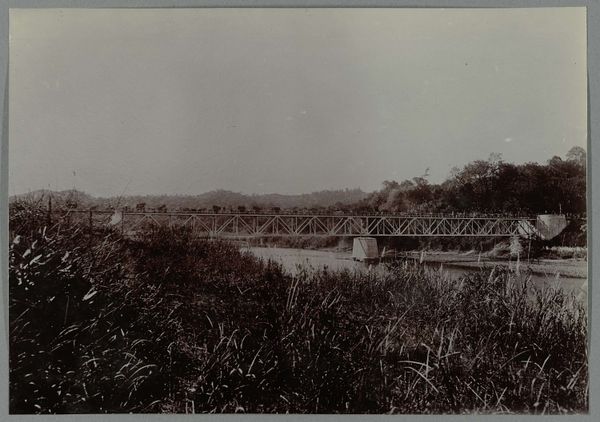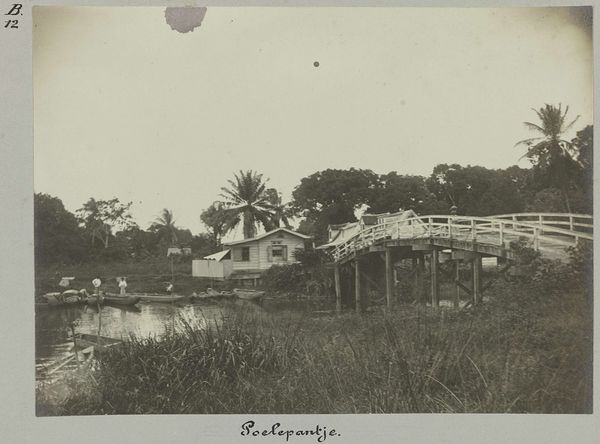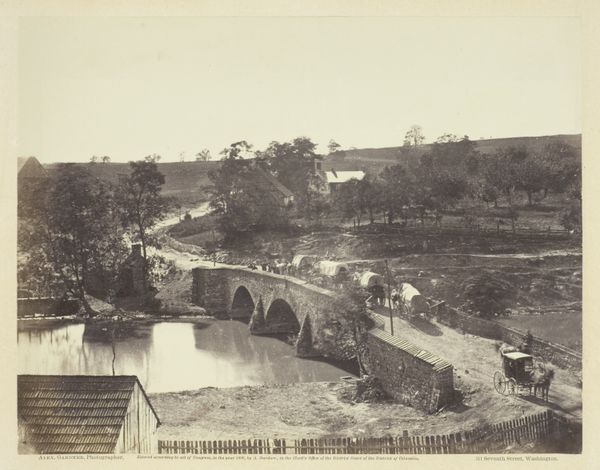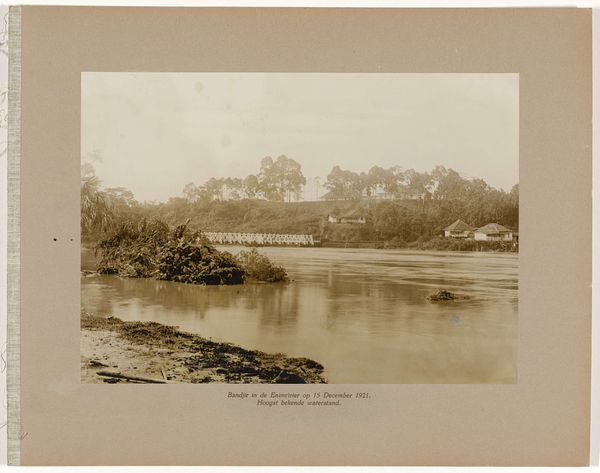
Paul Sandel op boot PS 7 voor de Sandelbrug in de Wampoe rivier, Tandjong Poera, Langkat Sumatra c. 1890 - 1900
0:00
0:00
heinrichernstco
Rijksmuseum
photography, albumen-print
#
landscape
#
outdoor photograph
#
outdoor photo
#
photography
#
orientalism
#
cityscape
#
albumen-print
Dimensions: height 121 mm, width 168 mm
Copyright: Rijks Museum: Open Domain
Curator: This is a photograph entitled "Paul Sandel op boot PS 7 voor de Sandelbrug in de Wampoe rivier, Tandjong Poera, Langkat Sumatra," created circa 1890 to 1900. It's an albumen print by Heinrich Ernst & Co, part of the Rijksmuseum's collection. Editor: The initial impression is serene. The tonal range of this albumen print offers a gentle depth that makes this Sumatran river scene so engaging. The water looks still, reflecting the structures in its path. Curator: Indeed. It showcases a detailed depiction of river transport and the colonial infrastructure present in Sumatra at the turn of the century. Note the boats and the bridge: clearly structures designed to enable the extraction of resources. Editor: I am captivated by the bridge's design, so airy and structured! The white contrast of the supports with the darkness of the jungle is almost rhythmic. How does the composition influence our understanding of the space and these human forms inhabiting it? Curator: The inclusion of the men on the boat draws our attention to the process of labour, connecting the scene directly to colonial enterprise, the harvesting of raw materials. What were the material conditions? How was the economy functioning? Those questions haunt this photograph. Editor: Certainly, that’s crucial to interpretation. Looking closely, I’m interested in the details revealed by the print: The reflections are wonderfully captured by the camera and by the albumen. And also how the photographer frames nature here--a view from an imposed, yet constructed reality. Curator: This kind of photography offered Europeans a curated view of their colonies, didn't it? It promoted trade but obscured labor. Editor: Perhaps. But its formal attributes give texture to that endeavor. Look at the organization of visual elements to form the picture, an exercise in symmetry and composition in service to… what? Certainly more than commerce. Curator: It shows us more of the how of colonial operation: in documenting the exploitation through landscape. A photograph is just a moment caught in time but a lot of conditions are reflected in this landscape. Editor: True. Its power lies, maybe, in precisely that balance: this landscape captures something immutable of colonial life.
Comments
No comments
Be the first to comment and join the conversation on the ultimate creative platform.
